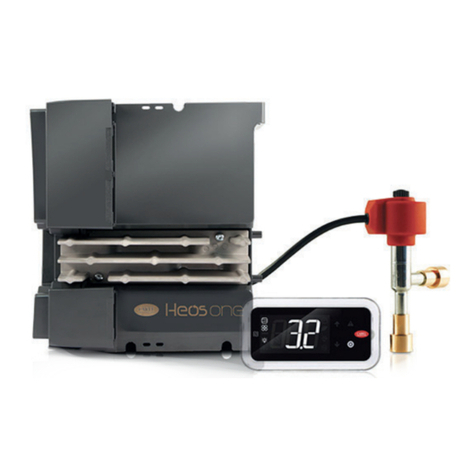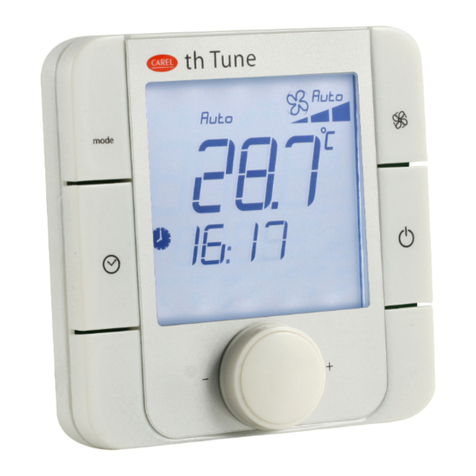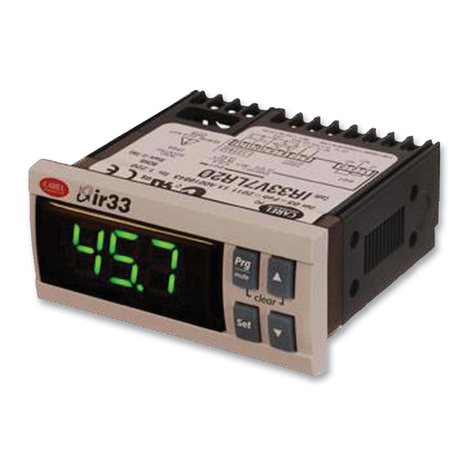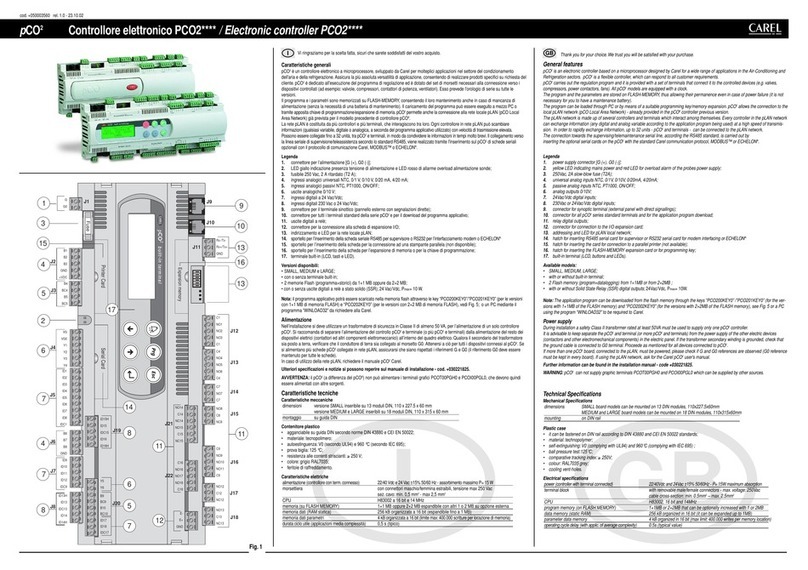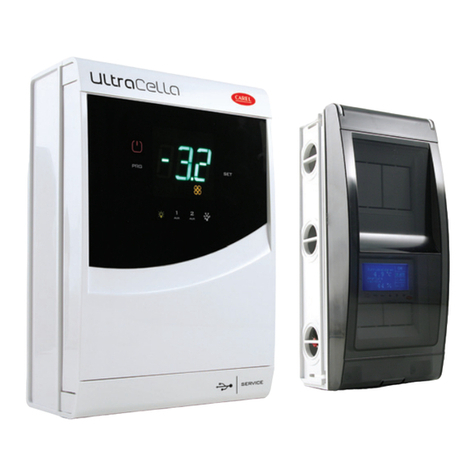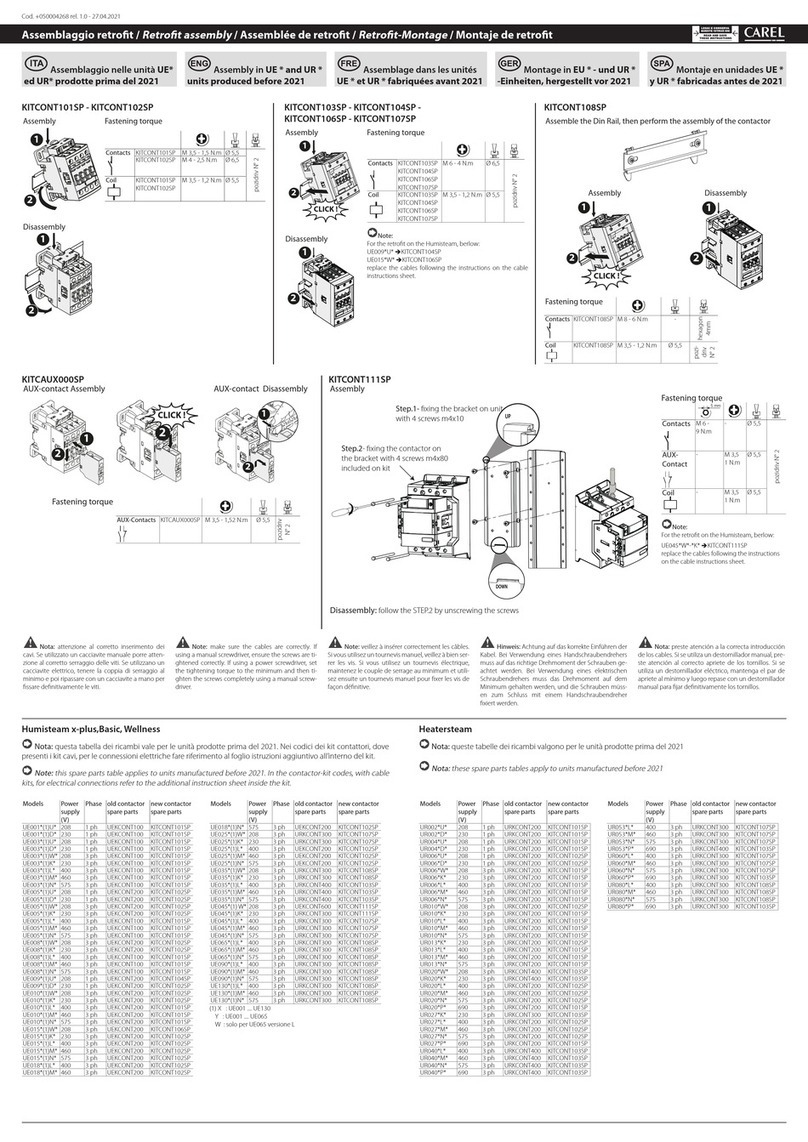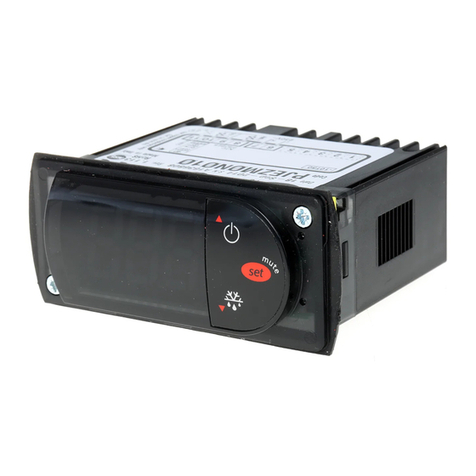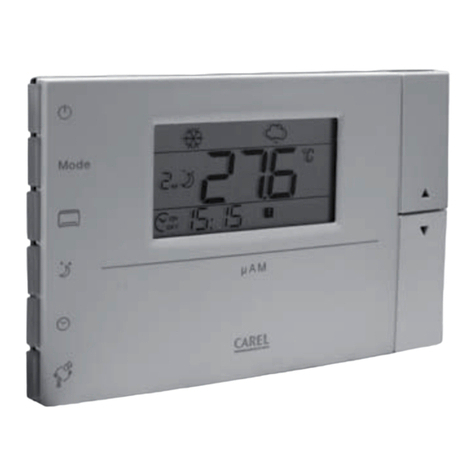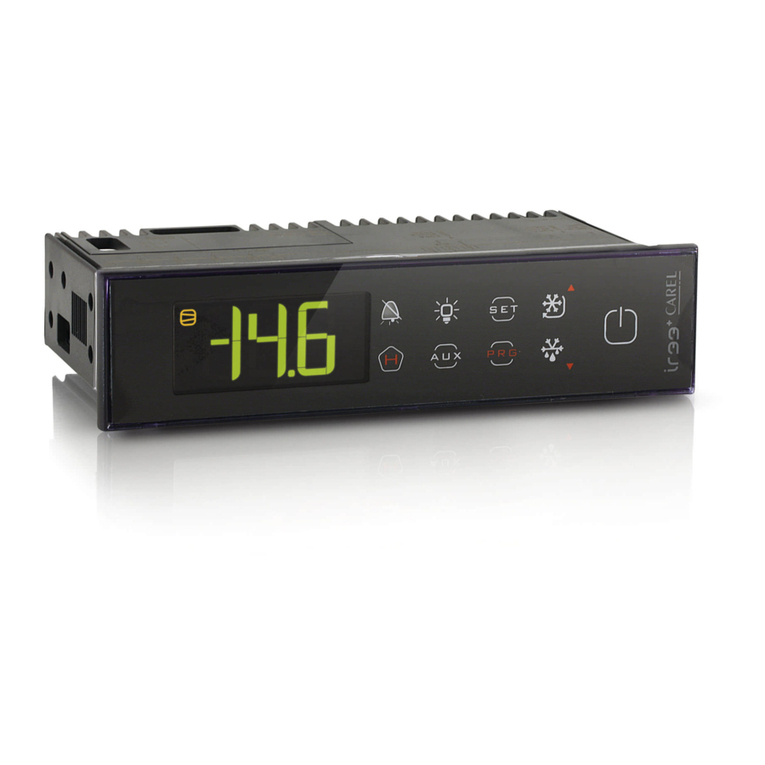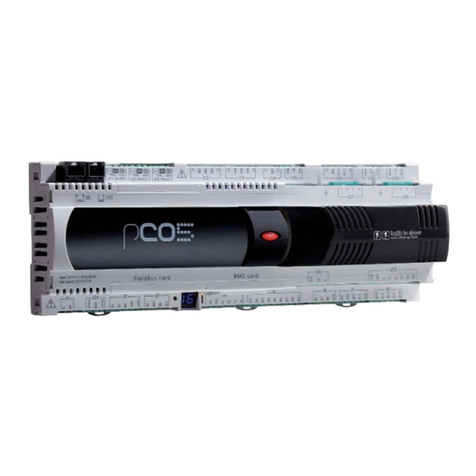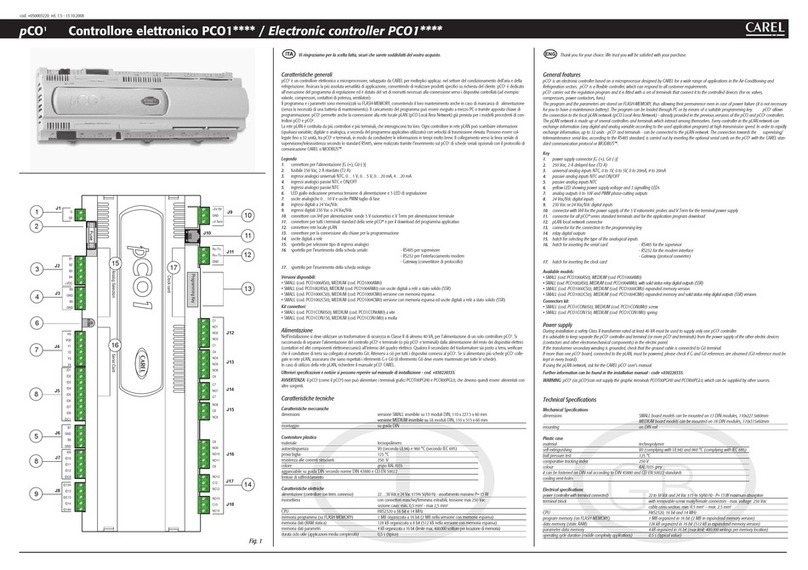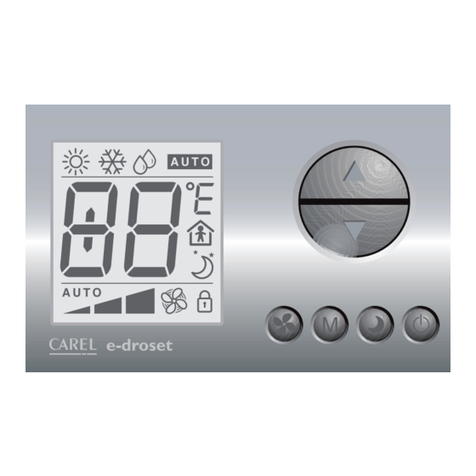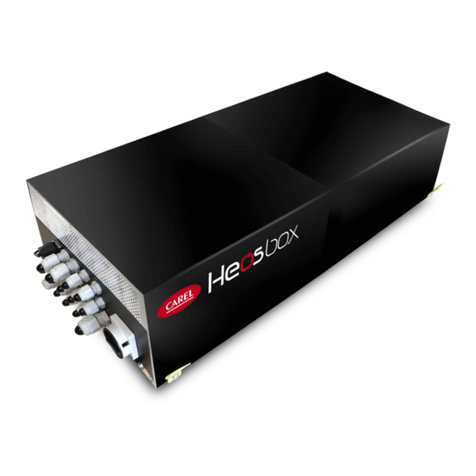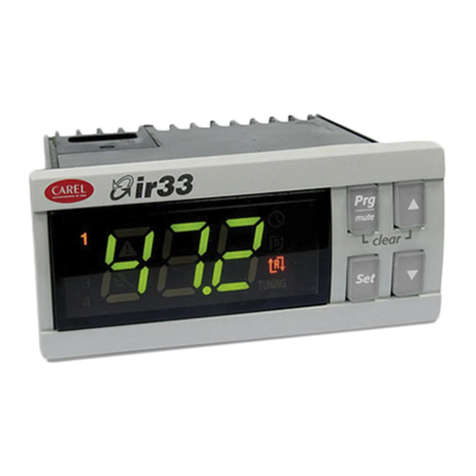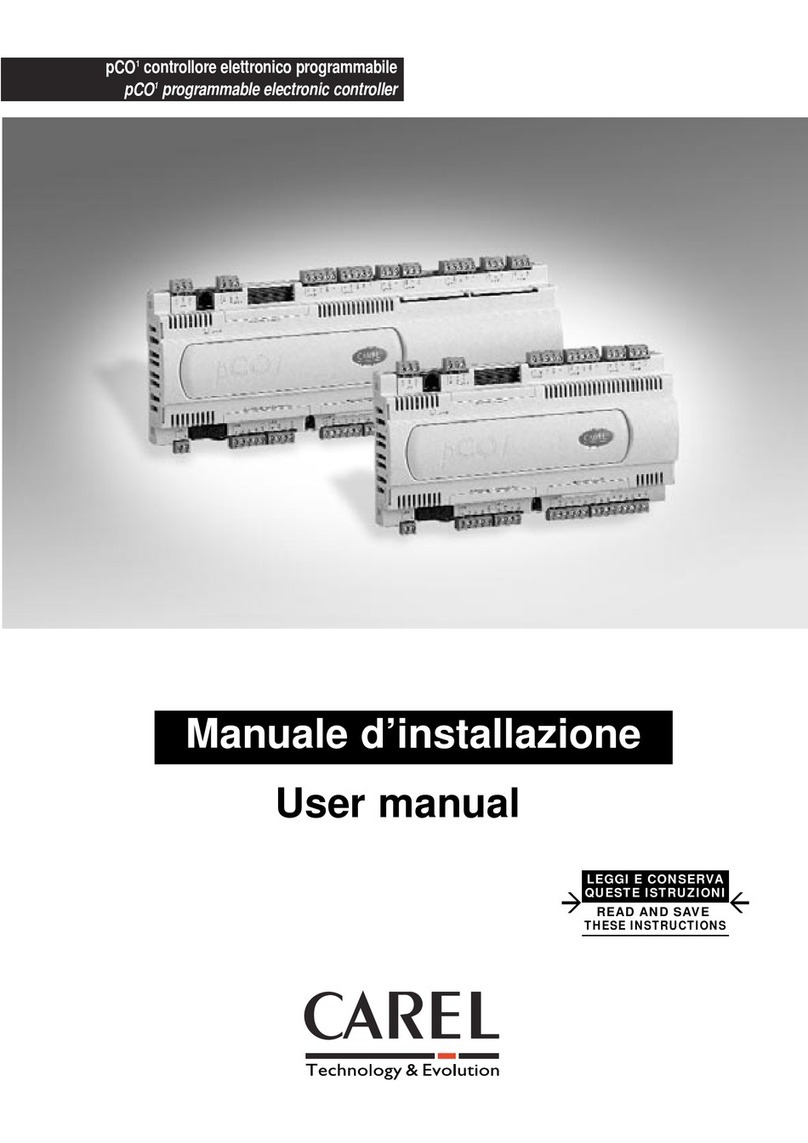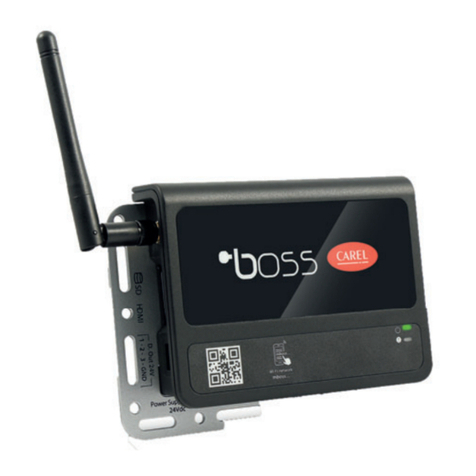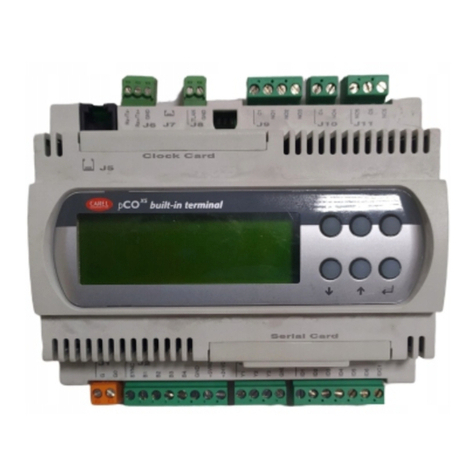
+0500016IE - rel. 1.2 - 13.04.2011
Controllo elettronico per condizionamento (modello a incasso)/
Electronic controller for air-conditioning (ush-mount model)
AT* - th Tune
th-Tune è il terminale ambiente Carel che, unito al controllo
programmabile pCO*, permette all’utente la regolazione della
temperatura e dell’umidità di un ambiente residenziale. A seconda
dei modelli può essere dotato di sonda di temperatura o di sonda
di temperatura e umidità e l’alimentazione può essere scelta tra
i 230 Vac e i 24 Vac/Vdc. th-Tune è compatibile con le principali
scatole da incasso a muro presenti nel mercato (IT, USA, DE, CN).
L’impostazione di temperatura e umidità avviene in maniera
semplice e intuitiva grazie alla manopola frontale. th-Tune fornisce
inoltre all’utente la possibilità di modicare alcune impostazioni
dell’ambiente come la modalità di funzionamento e le fasce orarie.
La regolazione e le visualizzazioni dipendono esclusivamente dal
controllo al quale th-Tune è connesso. L’ingombro limitato e il
design elegante inne consentono una facile adattabilità a tutti
i tipi di ambienti.
Codice Modello
ATA******* alimentazione 230 Vac
ATC******* alimentazione 24 Vac/Vdc
AT******D* a incasso
AT*****A** con sonda di temperatura
AT*****C** con sonda di temperatura e umidità
AT*M****** tastiera a membrana
Tab. 1
Avvertenze per l’installazione
• Questi terminali sono stati progettati per il montaggio a incasso,
con scatola conforme alle normative vigenti;
• prima di eettuare qualsiasi operazione sul terminale, togliere
l’alimentazione dal dispositivo portando l’interruttore principale
del quadro elettrico su OFF. Rimuovere quindi la parte frontale
del terminale e quindi quella posteriore per eettuare i
collegamenti elettrici;
• per la versione a 24 Vac utilizzare un trasformatore di alimentazione
di classe 2 con una potenza di almeno 2 VA;
• se il trasformatore utilizzato per il terminale è lo stesso anche
per i controlli collegati in linea seriale, allora il morsetto di
alimentazione GND del th Tune deve essere collegato alla linea
GND di alimentazione dei controlli;
• se è richiesta la messa a terra di un morsetto di alimentazione del
terminale a 24 Vac/24 Vdc, deve essere messo a terra il morsetto
GND, sia per per il th Tune che per gli altri dispositivi alimentati;
• quando th Tune è alimentato in tensione continua anche i
controlli collegati tramite seriale devono essere alimentati in
tensione continua. Se i controlli collegati non possono essere
alimentati in tensione continua, allora neanche th Tune può
essere alimentato in tensione continua;
• per la connessione seriale utilizzare un cavo tripolare schermato,
AWG 20-22. La lunghezza della rete non deve superare i 500 m.
Per reti molto estese aggiungere una resistenza da 120 Ohm tra
RX/TX+ e RX/TX- del primo e dell’ultimo dispositivo per evitare
possibili problemi di comunicazione.
Montaggio
Per montare la parte posteriore occorre almeno una scatola a
incasso Ø 65 mm e profondità 31 mm.
1. separare la parte anteriore da quella posteriore del terminale
utilizzando un cacciavite (g.1);
2. scollegare il connettore a 4 poli dalla parte anteriore (g.2);
3. eettuare i collegamenti elettrici:
• per i modelli a 230 Vac vedere g.4;
• per i modelli a 24 Vac/24 Vdc vedere g.3; fare attenzione a
rispettare la polarità 24 V , GND nel caso di alimentazione
a tensione continua;
4. ssare la parte posteriore alla scatola da incasso con le 2 viti
a corredo:
• per i modelli AT******D* inserire le viti come indicato in g. 6 e 7;
5. reinserire il connettore a 4 poli;
6. rimontare inne il terminale, partendo dai dentini inferiori con
un movimento a cerniera. Assicurarsi che i li elettrici entrino in
sede, per avere il corretto ssaggio a scatto.
Smontaggio
Inserire un cacciavite nella fessura superiore (g.1) e premere verso
il basso per estrarre il display.
Note generali
Evitare l’installazione del terminale in ambienti che presentino le
seguenti caratteristiche:
• umidità relativa maggiore di quanto indicato;
• forti vibrazioni o urti;
• esposizione a getti d’acqua;
• esposizione ad atmosfere aggressive ed inquinanti (es.: gas
solforici e ammoniacali, nebbie saline, fumi) con conseguente
corrosione e/o ossidazione;
• elevate interferenze magnetiche e/o radiofrequenze (ad
esempio vicino ad antenne trasmittenti);
• esposizione all’irraggiamento solare diretto e agli agenti
atmosferici in genere;
• ampie e rapide uttuazioni della temperatura ambiente;
• ambienti ove sono presenti esplosivi o miscele di gas
inammabili;
• esposizione alla polvere (formazione di patina corrosiva con
possibile ossidazione e riduzione dell’isolamento).
86
86
8 22,55 28
48
Dimensioni/ Dimensions (mm)
Smontaggio/ Dismantling
Collegamenti elettrici / Wiring
24 Vac/dc 230 Vac
GND
Rx+/Tx+
Rx–/Tx–
GND
24V~/24V
GND
Rx+/Tx+
Rx–/Tx–
N230V~
L 50/60Hz
Fig. 3 Fig. 4
Fig. 1
Fig. 2
th-Tune is the Carel room terminal that, together with the
pCO* programmable controller, allows the user the control
the temperature and humidity in residential environments.
Depending on the model, the terminal is tted with a temperature
probe or temperature and humidity probe, and power
supply may be 230 Vac or 24 Vac/Vdc. th-Tune is compatible
with the main ush mount distribution boxes available on
the market (IT, US, DE, CN). Temperature and humidity set
is simple and intuitive, using the knob on the front panel.
th-Tune also allows the user to make some settings,
such as the operating mode and time bands.
The type of control and displays depend exclusively on the
controller that th-Tune is connected to. The compact dimensions
and elegant design make it suitable for all types of rooms.
Code Model
ATA******* 230 Vac power supply
ATC******* 24 Vac/Vdc power supply
AT******D* ush mount
AT*****A** with temperature probe
AT*****C** with temperature and humidity probe
AT*M****** membrane keypad
Tab. 1
Installation warnings
• These terminals have been designed for ush mount assembly,
on distribution boxes compliant with the standards in force;
• before performing any operations on the terminal, disconnect
the power supply from the device by switching the main switch
on the electrical panel OFF. Then remove the front part of the
terminal from the rear to make the electrical connections;
• for the 24 Vac version use a class 2 power transformer with
minimum rating of 2 VA;
• if the transformer used for the terminal is the same for the
controllers connected to the serial line, the power supply GND
terminal on the th-Tune must be connected to the controller
power supply GND line;
• if a power terminal on the 24 Vac/24 Vdc version needs to be
earthed, use the GND terminal, both for the th-Tune that the
other powered devices;
• when th-Tune has a DC power supply, the controllers connected
to the serial line must also have a DC power supply. If the
controllers do not allow DC power, then th-Tune cannot use the
DC power supply;
• for the serial connection use three-wire shielded cable, AWG
20-22. The length of the network must not exceed 500 m.
For extended networks t a 120 Ohm resistor between RX/
TX+ and RX/TX- on the rst and last device, to avoid possible
communication problems.
Assembly
To t the rear part of the terminal use a ush mount box with a
min. diameter of 65 mm and a minimum depth of 31 mm.
1. detach the front from the rear of the terminal using a
screwdriver (Fig. 1);
2. disconnect the 4-pin connector from the front part (Fig. 2);
3. make the electrical connections:
• for 230 models Vac see Fig. 4;
• for 24 Vac/24 Vdc models see Fig. 3; make sure the polarity
(24 V , GND) is right for direct current power supply;
4. fasten the rear to the ush mount box using the 2 screws
supplied:
• for models AT******D* insert the screws as shown in Fig. 6 and 7;
5. plug the 4-pin connector back in;
6. nally reposition the terminal, starting from the bottom tabs
using a hinge movement. Make sure that the electrical wires
are in position to ensure the terminal clicks into place.
Dismantling
Insert a screwdriver into the clot at the top (Fig. 1) and press
downwards to detach the display.
General notes
Avoid installing the terminal in environments with the following
characteristics:
• relative humidity greater than the value specied;
• strong vibrations or knocks;
• exposure to water sprays;
• exposure to aggressive and polluting atmospheres(e.g.: sulphur
and ammonia fumes, saline mist, smoke) so as to avoid corrosion
and/or oxidation;
• strong magnetic and/or radio frequency interference (for
example, near transmitting antennae);
• exposure to direct sunlight or the elements in general;
• large and rapid uctuations in the room temperature;
• environments where explosives or mixes of ammable gases
are present;
• exposure to dust (formation of corrosive patina with possible
oxidation and reduction of insulation).
